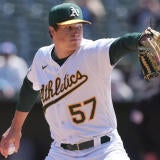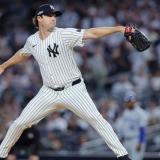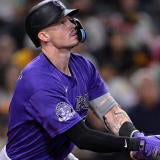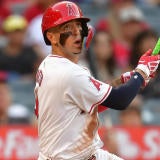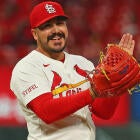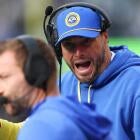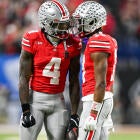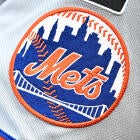2025 Ballpark Changes: Rays' temporary home may impact Shane McClanahan, Ryan Pepiot, and others
Plus, Chris Towers examines Ryan Mountcastle's outlook after changes to Camden Yards' left field
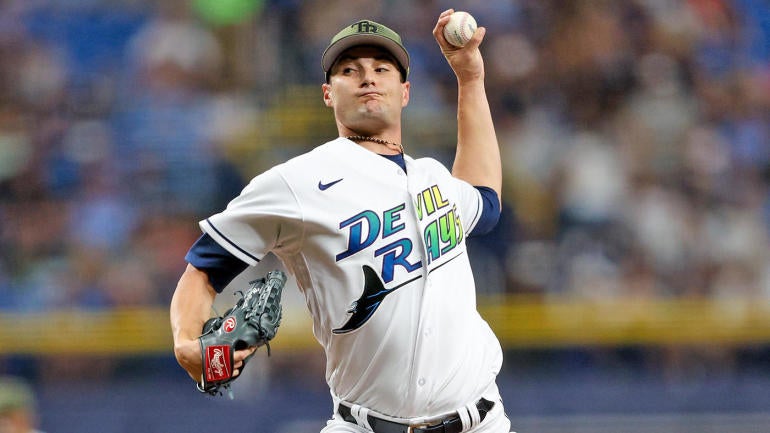
Before we get to the specifics of these situations, I do want to point out one thing about both the A's and Rays' situations, which is that there are just a ton of unknowns about how these situations will play out. We can look at park dimensions and weather effects and try to estimate the impact, but the fact of the matter is there is a psychological element at play here that is wholly unquantifiable. These are major-league players, used to certain amenities and comforts (yes, even in Tropicana Field and the Oakland Coliseum) that may not be present in minor-league parks.
How will that impact players? It might not at all, or it might impact everyone differently. But it's a factor looming over all of this that makes any analysis difficult.
Athletics playing in Sacramento
We've known about this one for a while, and while I suspect Sacramento will play a bit more hitter-friendly than Oakland, it might not be a dramatic change. The dimensions at Sutter Health Park aren't terribly dissimilar from those in Oakland – a bit deeper in the power alleys, especially in left field, but basically the same down the lines and to center field. But there is one key difference, and that is in the amount of foul territory available, as Oakland has more than any other park in the majors, while the park in Sacramento is much more intimate. There were 162 outs recorded in foul territory in Oakland last season, about 44 more than the average park and 87 more than in Atlanta, the lowest total of any park. We can safely assume there will be some impact here, though it isn't likely to be significant.
The other factor here is weather. Sacramento is only about an hour and a half northeast of Oakland, but it has a much warmer climate overall, with the mean temperature sitting around 8-12 degrees warming during the summer months – with the highs even higher. Warm weather tends to have an inflationary effect on offense, as Eno Sarris wrote a few years ago, so even if the dimensions were identical in these two parks, you would still expect Sacramento to play more hitter-friendly.
I'm not sure it's going to be an extreme effect, but on the whole, it seems safe to assume the A's are going from a relatively pitcher-friendly to one that should at least play closer to neutral. That's not nothing, and it should make the case for Brent Rooker and Lawrence Butler sustaining their breakouts a little easier to make.
Rays playing in Tampa
Now, this one might actually be extremely relevant. Tropicana Field has played as one of the more extreme pitchers' parks in baseball, and not just because of dimensions – the strikeout park factor there is the fourth highest in baseball and Willy Adames represents a high-profile example of a player who has talked about how much trouble he has had seeing the ball there. And the pitches themselves seem to move differently there, as Thomas Nestico noted during the 2024 season.
And now, as a result of the impact of Hurricane Milton on Tropicana Field, the Rays announced last week they will be making their temporary home at the Yankees' spring training facility in Tampa. George M. Steinbrenner Field shares dimensions with Yankee Stadium, so we already know it's going to benefit left-handed power hitters with that short porch in right field – so much so that I'm actively hoping the Rays don't trade Brandon Lowe, despite the fact that he's likely never going to be a true everyday player with the Rays.
But it's not just lefties who figure to benefit. Tropicana is actually a pretty decent park for right-handed power, thanks to its own intimate dimensions down the left field line. But with the strikeout and stuff-elevating impacts of Tropicana likely no longer a factor, all batters for the Rays should benefit from the new park, and it could potentially play as even more hitter-friendly than Yankee Stadium thanks to the warmer weather in Tampa.
But it could be bad news for Rays pitchers, and not just because there will probably be more runs scored in the new park. You also have to consider the likelihood of rain delays that will impact pitcher schedules. Florida gets near-daily rain during the summer months, and while it tends to be more in the afternoon than evening, rain delays will still be a regular part of the Rays experience this season. If all it means is games get pushed back or rescheduled, that's no big deal (though it will cost pitchers the occasional two-star week), but when rain occurs mid-game, you run the risk of having pitchers' starts shortened. It might not happen more than a handful of times over the course of the year, but it's a headache we'd rather not have to deal with.
All in all, I do think you can expect an increase in run scoring in Rays home games, and the park change could really adversely impact their pitchers, especially. I'm not necessarily running away from the likes of Shane McClanahan, Ryan Pepiot, Shane Baz, or Taj Bradley, but I am a little more wary of trusting them now.
Orioles moving the fences back in
Three years ago, the Orioles moved their fences in left field way back, and the effect on offense in Baltimore has been huge, as you can see by comparing home and road splits for Orioles pitchers in the three years since the change to the three years prior:
- Home, 2019-2021: 5.740
- Road, 2019-2021: 5.377
- Home, 2022-2024: 3.795
- Road, 2022-2024: 4.097
The overall quality of the Orioles pitching staff has improved dramatically in this time period, obviously, but the trend is clear, and it's backed up by park factor data: Camden Yards went from a solidly hitter-friendly park (third in Statcast park factors from 2019 through 2021) to a park that leans toward pitcher friendly (19th from 2022 through 2024). And the effects were even more pronounced for right-handed batters, whose HR park factor went from the best in baseball before the fences were moved back to the fourth-worst.
The Orioles admitted the initial move, which saw them move the fences back by around 30 feet (while also raising the fence height in left field), was too drastic, so we're getting another change in 2024. It won't be quite as extreme as last time, and parts of left field in Camden Yards will still be quite deep. But on the whole, it should play a lot closer to neutral than either of the previous configurations and should help the right-handed bats in the Orioles lineup, especially Ryan Mountcastle, who has lost 11 homers over the past three seasons due to the wall changes, per BaseballSavant.
Mountcastle is someone we've been hoping would get away from Baltimore, as he has been one of the most consistent underperformers based on his underlying quality of contact in recent years. But with the fences moved back in, maybe he can get back to being a 20-plus homer threat. In what should still be a very good lineup, that's not nothing, either.


